
Overview
GPS for IoT in the safety and security industry focuses on integrating GPS technology with IoT systems to enhance real-time tracking, asset protection and overall security measures. These solutions provide continuous monitoring and precise location data, ensuring efficient and reliable safety protocols for various applications. These advanced solutions help prevent theft, ensure quick response time and optimize operational efficiency across various sectors, including transportation, logistics, personal safety and critical infrastructure protection.
Depending on specific features and functions, GAO Tek’s GPS for IoT are sometimes referred to as: GPS Solutions for IoT, GPS Technologies for IoT, GPS Systems for IoT, GPS Implementations for IoT, GPS Applications for IoT, GPS Platforms for IoT, GPS Networks for IoT, GPS Frameworks for IoT, GPS Tools for IoT, and GPS Devices for IoT.
GAO Tek’s GPS for IoT have the following applications in safety and security:
- Navigation and Transportation
- Vehicle Navigation: Turn-by-turn directions for cars, trucks, motorcycles, and bicycles.
- Public Transportation: Real-time tracking of buses, trains, and other transit systems.
- Aviation: Navigation for commercial, private, and military aircraft.
- Maritime Navigation: Navigation for ships, boats, and submarines.
- Personal Use
- Smartphones: Location services for maps, ride-sharing apps, delivery services, and fitness tracking.
- Wearable Devices: Fitness trackers and smartwatches for tracking running routes, cycling paths, and other outdoor activities.
- Outdoor Recreation: Hiking, geocaching, and adventure sports.
- Agriculture
- Precision Farming: Mapping fields, soil sampling, planting, and harvesting with high accuracy.
- Livestock Management: Tracking and managing the movement of animals.
- Science and Environmental Monitoring
- Weather Forecasting: Data collection for climate models and weather prediction.
- Seismology: Monitoring tectonic plate movements and earthquake detection.
- Environmental Studies: Tracking wildlife, monitoring deforestation, and studying changes in the environment.
- Emergency and Safety
- Search and Rescue: Locating missing persons in remote or hazardous areas.
- Disaster Response: Coordinating relief efforts during natural disasters.
- Personal Safety: Emergency beacons and personal locators.
- Military and Defense
- Navigation: Guiding troops and vehicles in unfamiliar territories.
- Weapon Systems: Precision-guided munitions and targeting systems.
- Surveillance and Reconnaissance: Real-time tracking of assets and enemy movements.
- Infrastructure and Construction
- Surveying: High-accuracy land surveying and mapping.
- Construction: Site planning, machine control, and monitoring construction progress.
- Urban Planning: Developing and managing infrastructure projects.
- Commercial and Industrial
- Fleet Management: Tracking and managing delivery vehicles and logistics.
- Asset Tracking: Monitoring the location and movement of goods and equipment.
- Timing and Synchronization: Providing precise time signals for telecommunications, banking, and power grids.
- Education and Research
- Field Studies: Collecting data for geological, archaeological, and biological research.
- Academic Projects: Educational tools for teaching geography, earth sciences, and engineering.
- Legal and Regulatory
- Law Enforcement: Monitoring parolees and managing vehicle pursuits.
- Insurance: Usage-based insurance and tracking stolen vehicles.
More information on
and their applications in other industries can be found on this page. This category page lists related IoT.
Systems in Safety and Security in Utilizing GPS for IoT
Here are some popular systems in Safety and Security using GPS for IoT:
Access Control systems:
- Biometric Access Systems: Fingerprint, facial recognition and iris scanners.
- Card-based Access Systems: Proximity cards, smart cards and magnetic stripe cards.
- Mobile Access Solutions: Smartphone based access control via NFC or Bluetooth.
- Keypad entry systems: PIN-based access controls.
Surveillance Systems:
- Closed-circuit Television (CCTV): Analog and IP cameras with various features like night vision, motion detection and high-definition recording.
- Video Management System (VMS): Software solutions for managing video feeds, storage and analytics.
- Drone Surveillance: Unnamed aerial vehicles equipped with cameras for perimeter and large-area monitoring.
Intrusion Detection System (IDS):
- Perimeter Intrusion Detection Systems (PIDS): Sensors and cameras for monitoring fences, walls and building exteriors.
- Motion Detectors: Infrared, microwave and ultrasonic sensors for detecting movement inside and around facilities.
- Glass Break Detectors: Acoustic sensors designed to detect the sound of breaking glass.
Cybersecurity Systems
- Firewalls:
- Network Firewalls: Hardware or software solutions for filtering incoming and outgoing network traffic.
- Next-Generation Firewalls (NGFW): Advanced firewalls with integrated intrusion prevention, deep packet inspection and application awareness.
Intrusion Detection and Prevention Systems (IDPS):
- Network-Based IDPS: Systems that monitor network traffic for malicious activity.
- Host-Based IDPS: Software installed on individual devices to monitor and analyze operating system behavior and application activity.
Endpoint Security:
- Antivirus and Antimalware Software: Programs designed to detect, prevent and remove malicious software.
- Endpoint Detection and Response (EDR): Solutions that provide continuous monitoring and response to advanced threats.
Environmental Safety Systems
- Fire Alarm Systems:
- Fire Alarm Systems: Smoke detectors, heat detectors and manual pull stations integrated with alerting mechanisms.
- Fire Suppression Systems: Sprinkler systems, gas-based suppression (e.g. FM-200) and dry chemical agents.
- Emergency Communication System:
- Public Address and General Alarm (PAGA) Systems: integrated system for broadcasting emergency messages.
- Mass Notification Systems (MNS): Platforms for disseminating critical information to large groups via multiple channels (texts, email, loudspeakers).
- Gas Detection Systems:
- Fixed Gas Detectors: Continuous monitoring systems for detecting hazardous gases like CO, H2S and combustible gases.
- Portable Gas Detectors: Handheld devices for spot-checking and monitoring air quality in confined spaces.
Software Solutions for Safety and Security
- Security Information and Event Management (SIEM):
- Log management: Collecting, storing and analyzing log data from various sources.
- Real-Time Monitoring: Continuous monitoring and analysis of security events.
Incident Management Systems:
- Incident Response Platform: Tools for managing the lifecycle of security incident from detection to resolution.
- Ticketing Systems: Software for tracking and managing incident reports and resolutions.
- Risk Management Software:
- Threat Modeling Tools: Solutions for identifying and assessing potential threats.
- Vulnerability Management Systems: Tools for scanning, identifying and prioritizing security vulnerabilities.
Integrated Security Management Systems
- Physical Security Information Management (PSIM):
- Integration Platform: Software that integrates various security systems (CCTV, access control, IDS) for centralized management.
- Incident Management: Tools for correlating data from different sources and managing security incidents.
- Building Management Systems (BMS):
- Energy Management: Solutions for monitoring and optimizing energy usage.
- HVAC Control: Systems for managing heating, ventilation and air conditioning with security considerations.
This comprehensive list encompasses a variety of systems and software specifically aimed at ensuring safety and security in both physical and digital realms, providing technical professionals with an array of solutions to consider for enhancing protection measures.
GAO Tek’s targeted markets are North America, particularly the U.S., Canada.
Complying with Government Regulations
GAO Tek’s GPS comply or help our customers comply with the U.S. government regulations such as:
- 47 CFR Part 15: Governs unlicensed radio frequency devices, including those that use GPS technology. Ensures that GPS-enabled IoT devices do not cause harmful interference.
- 47 CFR Part 25: Regulates satellite communications, including GPS satellites. It includes licensing and technical requirements to ensure the proper functioning of satellite services used in IoT safety and security.
- Department of Homeland Security (DHS):
- National Institute of Standards and Technology (NIST) Special Publication 800-183: Network of things (NoT) Provides guidance on the security and privacy considerations for IoT devices, including those using GPS for safety and security.
- DHS Cybersecurity and Infrastructure Security Agency (CISA) Guidance: Offers specific guidelines for securing IoT devices that rely on GPS, addressing potential vulnerabilities and mitigation strategies.
- Federal Aviation Administration (FAA) Regulations:
- 14 CFR Part 107: Small unmanned Aircraft Systems (USA) regulations, which include the use of GPS for navigation and safety purposes. Ensures the safe operation of drones in the national airspace, which is critical for IoT applications in security and surveillance.
- National Highway Traffic Safety Administration (NHTSA):
- 49 CFR Part 563: Event Data Recorders (EDRs) regulations. Requires the recording of specific data, including GPS coordinates, in the event of a crash for safety analysis and security investigations.
- Federal Motor Vehicle Safety Standards (FMVSS) 202: Specifies requirements for head restraints in vehicles, with GPS data being used to enhance vehicle safety systems and accident response.
- Federal Railroad Administration (FRA):
- 49 CFR Part 236: Positive Train Control (PTC) regulations. Requires the use of GPS technology for train location tracking to enhance rail safety and prevent accident.
- Coast Guard Regulations:
- 46 CFR Part 4: Marine Casualties and Investigations. Requires the use of GPS data in the investigation of marine incidents to improve safety and security at sea.
- 33 CFR Part 164: Navigation safety regulations. Mandates the use of GPS for certain vessels to ensure safe navigation and avoid collisions.
- Environmental Protection Agency (EPA):
- 40 CFR Part 98: Greenhouse gas reporting program. While not directly related to safety and security, it involves the use of GPS for tracking and reporting emissions from mobile sources, which can impact public safety and environmental security.
- Food And Drug Administration (FDA):
- 21 CFR Part 880: General Hospitals and Personal Use Devices. Regulations for medical devices that include GPS technology for tracking and monitoring patients, ensuring safety and security in healthcare applications.
GAO Tek’s “GPS” comply or help our clients comply with the Canadian regulations such as:
- Innovation, Science and Economic Development Canada (ISED)
- Radio Standards Specification (RSS-210)
- Radio Standards Specification (RSS-247)
- Canadian Radio-television and Telecommunications Commission (CRTC): Provides regulatory frameworks that include provisions for the security and privacy of telecommunications services, encompassing IoT devices that utilize GPS for safety and security.
- Transport Canada Regulations:
- Canadian Aviation Regulations (CARs): Govern the use of GPS in unmanned aerial vehicles (UAVs) or drones, including requirements for safe operation, licensing and technical standards to ensure airspace safety.
- Railway Safety Act: Mandates the use of advanced train control systems, including GPS-based positive train control (PTC) to enhance rail safety by preventing collisions and managing train movements securely.
- Health Canada Regulations:
- Medical Device Regulations (SOR/98-282)
- Canadian Coast Guard Regulations:
- Navigation Safety Regulations: Mandate the use of GPS for certain classes of vessels to ensure safe navigation and avoid collisions in Canadian water.
- Marine Safety Management Systems (SMS) Requirements.
- Public Safety Canada Guidelines:
- National Strategy for Critical Infrastructure.
- Cyber Security Strategy: provides a framework for protecting Canadian information systems, including IoT devices that use GPS, from cyber threats and ensuring the resilience of critical services.
- Canadian Environmental Protection Act (CEPA)
- Environmental Emergency Regulations.
- Privacy and Data Protection Laws
- Personal Information Protection and Electronic Documents Act (PIPEDA)
Case Studies of “GPS” in “Safety and Security”
GPS in IoT is sometimes referred to as Location-Based Services (LBS) or Geolocation Services, GPS tracking, Telematics, Smart tracking Systems, Geofencing.
Here are some practical examples of using “GPS” in “Safety and security”:
- Asset Tracking: GPS enables real-time tracking of valuable assets such as vehicles, equipment, and cargo, ensuring they remain within designated zones and facilitating rapid recovery in case of theft or loss.
- Personnel Monitoring: GPS-equipped wearable devices can track the location of workers in hazardous environments, allowing supervisors to ensure their safety and respond quickly in emergencies.
- Fleet Management: GPS tracking systems in vehicles monitor driver behavior, route efficiency, and vehicle maintenance, enhancing safety by encouraging responsible driving practices and enabling quick response to accidents or breakdowns.
- Emergency Response: GPS-enabled emergency beacons and communication devices help responders locate individuals in distress, whether lost in remote areas or caught in natural disasters, enabling faster and more precise rescue operations.
- Perimeter Security: GPS-based geofencing alerts security personnel when assets or individuals breach predetermined boundaries, enhancing site security and preventing unauthorized access.
- Route Planning: GPS navigation systems optimize travel routes for security patrols, emergency responders, and transportation of sensitive materials, minimizing risks associated with unpredictable or dangerous routes.
- Geolocation Authentication: GPS-based authentication systems verify the location of users accessing secure facilities or data, adding an extra layer of security to access controls.
- Wildlife Monitoring: GPS tracking collars on endangered species aid conservation efforts by monitoring their movements, identifying habitats, and detecting threats such as poaching or habitat destruction.
- Disaster Management: GPS mapping and tracking assist in coordinating disaster response efforts by mapping affected areas, locating survivors, and coordinating rescue and relief operations efficiently.
- Supply Chain Security: GPS tracking integrated into shipping containers and packages ensures the security and integrity of goods during transit, reducing the risk of theft, tampering, or diversion.
GAO RFID Inc. RFID Hardware, a sister company of GAO Tek Inc., is ranked as a top 10 RFID suppliers in the world. Its RFID, BLE, and IoT products have also been widely used in professional, scientific, and technical services.
RFID Solutions for the Government & Military | GAO RFID
Research, Technology & Professional Services Industries | RFID Solutions – GAO RFID
Use of GPS for IoT Devices with Leading Software and Cloud Services in Safety and Security
GAO Tek has used or has facilitated its customers to use GAO’s GPS for IoT with some of the leading software and cloud services in their applications. Examples of such leading software and cloud services include:
- Geotab
- Samsara
- Revolar
- React Mobile
- SimpliSafe
- Ring Alarm
- Fleet Complete
- Asset Panda
- Honeywell Connected Plant
- GE Digital
- RapidSOS
- Noonlight
- Amazon Web Services (AWS)
- Microsoft Azure
- Google Cloud Platform (GCP)
- IBM Cloud
- Verizon Thingspace
- AT&T IoT Solutions
- Cisco IoT Cloud Connect
- Oracle IoT Cloud
- SAP IoT Application Enablement
- T-Mobile IoT
GAO Tek’s Zigbee for IoT and their applications in other industries are listed on this page, GPS Other related products can be found at this category page,
Meeting Customers’ Demands
Large Choice of Products
In order to satisfy the diversified needs of their corporate customers, GAO Tek Inc. and its sister company GAO RFID Inc. together offer a wide choice of testing and measurement devices, network products, RFID, BLE, IoT, and drones.
Fast Delivery
To shorten the delivery to our customers, GAO has maintained a large stock of its products and is able to ship overnight within the continental U.S. and Canada from the nearest warehouse.
Local to Our Customers
We are located in both the U.S. and Canada. We travel to customers’ premises if necessary. Hence, we provide a very strong local support to our customers in North America, particularly the U.S., Canada. Furthermore, we have built partnerships with some integrators, consulting firms and other service providers in different cities to further strengthen our services.
Here are some of the service providers in Safety and Security we have worked with to serve our joint customers:
- Accenture
- Deloitte
- IBM Global Services
- Capgemini
- Cognizant
- Tata Consultancy Services (TCS)
- Infosys
- Wipro
- DXC Technology
- PricewaterhouseCoopers (PwC)
- Ernst & Young (EY)
- HCL Technologies
- Tech Mahindra
- CGI Group
- Booz Allen Hamilton
- KPMG
- LTI (L&T Infotech)
- NTT DATA
- West Monroe Partners
GAO has Many Customers in Safety and Security
The products from both GAO Tek Inc. and GAO RFID Inc. have been widely used in Management of companies and enterprises by many customers, including some leading companies. Here is
more information on applications of GAO RFID Inc.’s products in Safety and Security.
Property equipment management industry RFID Solutions
Finance insurance industries RFID Solutions
Here are some of GAO’s customers in Safety and Security:
Northeast Region of the U.S:
- ADT
- Brinks Home Security
- Tyco Integrated Security
- Vector Security
- Securitas
- Honeywell Security
Midwest Region of the U.S:
- G4S Secure Solutions
- Per Mar Security Services
- Interface Security Systems
- Diebold Nixdorf
- Stanley Security
- Johnson Controls
South Region of the U.S:
- Brivo
- Allied Universal
- Tech Systems, Inc.
- Sonitrol Security Systems
- Southwest Security Systems
- Peak Alarm Company
West Region of the U.S:
- Vivint Smart Home
- CalAtlantic Security Solutions
- Cypress Private Security
- The Alarm Company
- Northland Controls
- Western States Fire Protection (WSFP)
Canada:
- ADT Canada (formerly AlarmForce)
- Commissionaires
- Tyco Integrated Fire & Security Canada
- Paladin Security
- GardaWorld
- Securitas Canada


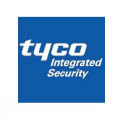
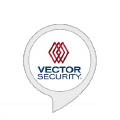




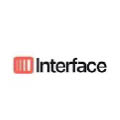




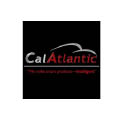
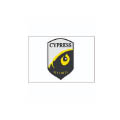


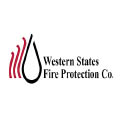



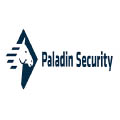


This resource page is for
Below are other resource containing useful information for
FAQs on Satellite/GPS IoT on GAOTek.com
How to Choose a Satellite/GPS IoT
Components of Satellite/GPS IoT
Operation, Maintenance & Calibration of a Satellite/GPS IoT
Customers in the U.S. and Canada of Satellite/GPS IoT for IoT
Contact Us
We ship overnight to anywhere on continental U.S. and Canada from one of our local warehouses.
If you have any questions about our products or want to place an order, our technical experts can help you.
Please fill out this form or email us.
